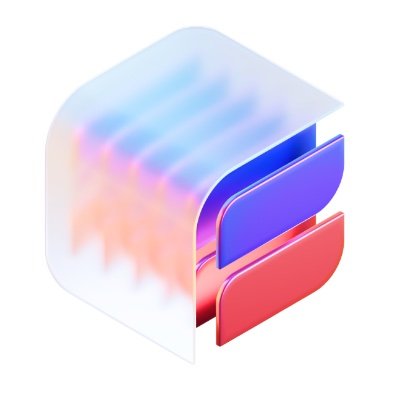Access in-depth blockchain data on Solana with Flipside Crypto. Create dashboards, run SQL queries, and gain real-time insights into blockchain activities.
About Flipside Crypto
Flipside is a blockchain data platform that delivers modeled, queryable data for dozens of networks—including Solana—so analysts, teams, and curious traders can explore on-chain activity without running their own nodes or pipelines. At its core, Flipside organizes raw chain data into human-readable SQL tables (e.g., blocks, transactions, events) plus “easy” tables (like swaps or prices) that simplify common questions. For Solana users, this means you can study token flows, DEX activity, NFT trades, staking behavior, bridge flows, and more using familiar SQL or friendly, non-code interfaces depending on the product path you choose.
In 2025, Flipside’s access options evolved. The legacy Studio dashboards and API/SDK products were scheduled for deprecation on July 1, 2025; Flipside directs users to newer ways to access data (including enterprise Snowflake data shares and no-code/AI interfaces). If you previously used Studio or the public API, plan your migration path accordingly.
On Solana specifically, Flipside maintains decoded, labeled, and frequently refreshed tables and publishes release notes when new tables ship (for example, Jupiter swap tables were added to improve swap analysis and reduce double counting). This approach gives beginners a clear starting point and gives advanced users the schema depth needed to build dashboards, risk monitors, or custom research.
What makes Flipside special?
For Solana traders and analysts, three practical traits stand out:
Modeled, decoded Solana data you can trust. Flipside doesn’t just mirror raw RPC output. Data teams and community contributors model Solana activity into approachable schemas—such as
solana.eventsfor instruction-level insights and additional tables for inner instructions—so you can answer real questions quickly (e.g., “How much flow did a token see via Jupiter this week?”). Tutorials explicitly teach how to work with Solana’s instruction model in SQL.Purpose-built table families for trading analytics. Beyond base tables, Flipside ships “easy” tables for swap activity, pricing, and cross-chain flows. Notably, new Jupiter swap tables were introduced to make Solana DEX analysis more accurate and to avoid double-counting—useful when you’re comparing venues, strategies, or wallets. Solana bridge activity also appears in cross-chain tables, broadening market-structure analysis.
Multiple access paths, from beginner to enterprise. Non-coders can explore with Flipside AI (no SQL needed). Data teams can mount Snowflake data shares to join Flipside’s Solana tables with internal metrics, BI dashboards, or data science pipelines. This flexibility reduces the friction between quick curiosity and production-grade analytics.
Flipside also documents freshness targets (typical lag measured from chain head) and regularly announces schema standardization efforts—useful for teams that care about dataset stability across chains and quarters.
Pricing
Discover the pricing options available for Flipside Crypto
Flipside AI: advertised as “free for a limited time.” Confirm current status before planning a workflow.
Snowflake Data Shares / Pro: offered via Snowflake; pricing is not publicly listed and typically follows an enterprise “contact us” motion (you pay Snowflake compute for queries plus any provider terms). If your team needs this route, request access through Flipside and your Snowflake admin.
Legacy Studio/API/SDK: deprecating as of July 1, 2025; availability after that date is not guaranteed. Do not rely on it for new builds.
If your use case requires precise pricing, it is currently unavailable publicly and needs confirmation with Flipside’s team or your Snowflake account representative.
Pro Tips
Start with “easy” tables (e.g., swaps, prices) to validate logic, then move to granular events/inner-instruction tables for precision.
When studying Solana DEX volume, use the Jupiter swap tables to avoid double-counting routed trades.
Check table freshness targets before publishing time-sensitive results; pick tables aligned to your latency needs.
If you’re moving from Studio/API, archive your queries and plan a migration to Flipside AI for exploratory work and Snowflake shares for production.
Frequently Asked Questions
Get answers to the most common questions about this tool
Does Flipside cover Solana beyond base transactions?
Yes. In addition to core blocks/transactions/events, Flipside provides “easy” tables (e.g., swaps, prices) and periodically ships Solana-specific enhancements—such as Jupiter swap tables—to improve analysis quality.
I don’t know SQL. Can I still use Flipside for Solana analysis?
Yes. Flipside AI lets you explore on-chain insights without code and is described as free for a limited time. For production data stacks, teams can use Snowflake data shares.
What happened to Flipside Studio and the public API/SDK?
Flipside announced that Studio, Dashboards, API, and SDK are deprecating on July 1, 2025, with guidance to use alternative access paths going forward.
How fresh is the data for trading decisions?
Flipside publishes table freshness targets (latency from chain head) and updates schemas to standardize fields across chains. Check the freshness docs for the tables you rely on.
Can I analyze cross-chain flows that touch Solana?
Yes. Flipside maintains cross-chain bridge tables that include Solana bridge activity, useful for understanding inflows/outflows.

